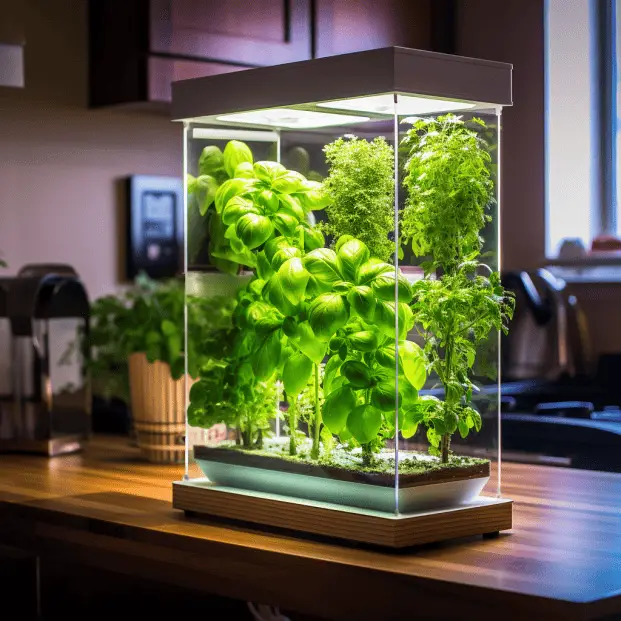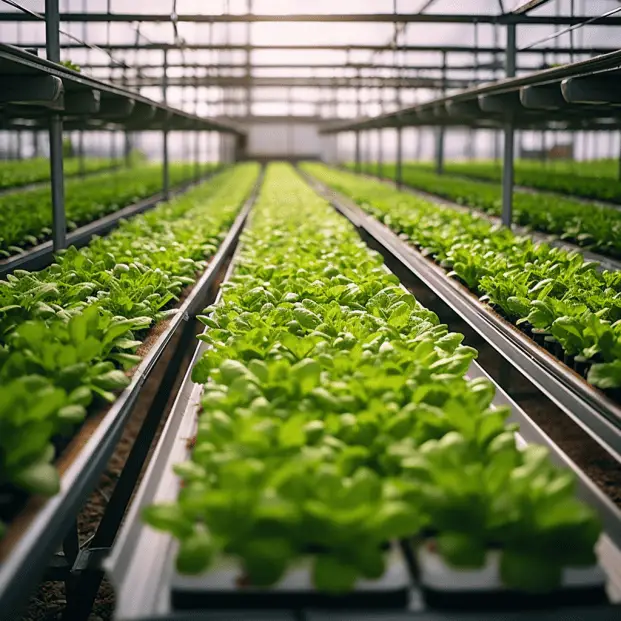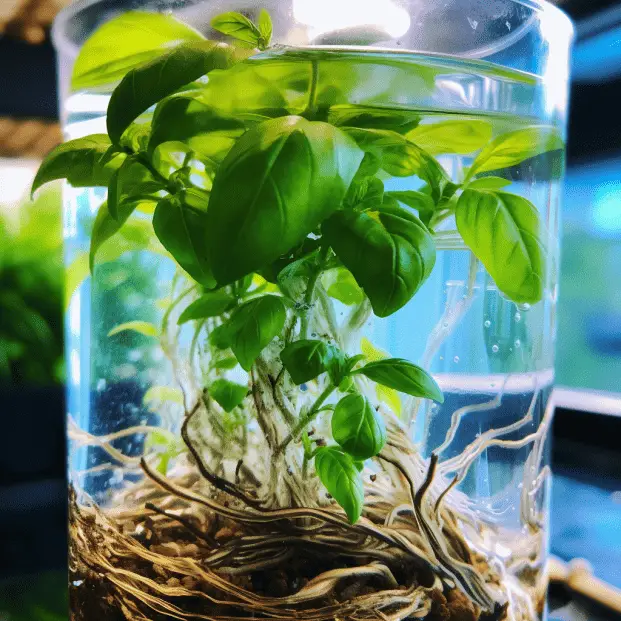What is the cheapest way to start hydroponics? Growing produce at home using hydroponics is definitely an affordable and unique way to garden.
However, before starting your own system, there are a few things you need to know.
While setting up a DIY hydroponic garden may seem like a simple process, take it from this expert – it’s not always as easy as it seems!
Did you hear about the tomato that kept falling off the vine? It was too weak to support itself! Haha.
But seriously, building a working hydroponic system requires selecting the right materials and paying close attention to setup details.
I learned this lesson the hard way when my very first system flooded all over my kitchen floor.
Turns out using the wrong tubing means your pump works a little too well! Since then, I’ve built many successful hydroponic gardens.
Now I’m sharing my best affordable setup tips to help you avoid beginner mistakes.
Some key things that can make or break your hydroponic endeavor include choosing the appropriate growing method, obtaining quality nutrient solution, and maintaining consistent watering.
If any of those falter, your plants won’t be so happy.
Stick with me to the end, and I promise your first hydroponic harvest will be a breeze! You’ll be growing like a pro in no time.
Just don’t say I didn’t warn you about getting your feet wet when trying this out.
It’s easy to end up in over your head, like my poor flooded kitchen.
Better to learn from my fails than repeat them yourself, right? Now keep reading to get started saving money while growing your own fresh produce.
The secrets I share will have you well on your way to homegrown success!
KEY TAKEAWAY
What is the cheapest way to start hydroponics?
The cheapest way to start hydroponics often involves DIY systems (1) using recycled materials and optimizing small spaces, emphasizing sustainability and resourcefulness.
How growing plants without soil works
Have you ever wondered how your favorite fruits and veggies can grow without soil? Well hydroponics is the method that makes this possible.
Instead of being planted in dirt, hydroponically grown plants have their roots in nutrient-rich water.
Plants are still able to get everything they need like minerals and nutrients, but the water delivers it straight to their roots.
This means the roots don’t have to search around in soil for what they want.
They can just absorb it right from the liquid.
This direct delivery lets the plants use their energy to grow big and strong.
A hydroponic system provides the roots with the perfect conditions.
The water is always fresh with just the right balance of what plants need like pH levels.
Tank systems use pumps and tubing to keep the water oxygenated and circulating to the roots.
Farmers can also use timers and monitors to keep an eye on the water.
There’s a few different types of hydroponic setups for farms and greenhouses.
Simple bucket systems are just that – plants in water-filled buckets.
Deep Water Culture tanks submerge the roots in water ponds below the plants.
Drip systems deliver nutrients straight to the roots using irrigation lines.
Nutrient Film Technique uses gentle flowing water films which the roots hang in.
Experts say nutrient film and deep water culture are good for starting out as they’re easy to use and maintain.
Drip systems scale up well too as farms can expand.
Leafy greens like lettuce are hydroponic superstars since their shallow roots love the constant water access.
Getting to know how different setups work will help you choose the right hydroponics method for you!
The 3 most affordable hydroponic systems for beginners on a budget

If you’re interested in giving hydroponics a try but want to watch your spending, don’t fret.
There are affordable systems for just getting your feet wet without breaking the bank.
Three good basic options are drip lines, deep water culture and nutrient film technique.
Drip irrigation (2) is a super simple system using tubing to water plants.
You won’t need much more than plastic pipes and a watering can.
Deep water tanks suspend plant roots in a pool of nutrients below them.
This method is simple to assemble and low-cost.
Nutrient film machines use sloped channels and flowing water films over roots – it’s economical while being easy to maintain and expand.
Remember – with hydroponics you can grow without dirt at a low price.
Drip, deep water culture and nutrient film technique get great results without hurting your wallet.
Try one to start and see the fast growth and bountiful harvests hydroponics has to offer.
Step-by-step guide to building your own cheap DIY hydroponics system

Want to try growing plants the water way but don’t want to break the bank? Then follow these simple steps to build your own low-cost home hydroponics system!
Hydroponics means cultivating crops without soil, using nutrient-rich water instead.
It’s a great way to extend your growing season or start an indoor garden.
You’ll need a container like a plastic tub for the roots, and holes to hold the plants above the water.
Net pots work well for this.
Once you gather your container and pots, put your system together.
Cut openings in the tub lid that fit the pots snugly.
Plumb in an air pump and stone too – the bubbles add oxygen so roots can breathe.
Fill ‘er up with nutrients and place in sunlight.
Now just add your green friends! Herbs and lettuces are good starting options.
Plant seeds or seedlings in the net pots, securing them with clay balls or fiber.
Keep an eye on pH levels and provide optimal temperatures and light.
With minimal materials and effort, you’ll be growing at home for less dinero.
The best plants for an inexpensive home hydroponic garden setup
If you’re looking to start hydroponics with savings in mind, leafy greens like lettuce top the list.
Here are some reasons it’s so budget-friendly:
Fast growth – Lettuce matures quickly at around 4-6 weeks from seeds to harvest.
You’ll be eating your own salad in no time.
Low costs – Lettuce thrives in basic systems that don’t require fancy gear.
A simple setup of tub, pump and trays does the trick for cheap.
Variety – Try romaine, butterhead and more for different flavors.
Plus lettuce adapts well, so it handles differences in temperature and moisture with ease.
By choosing lettuce as your main crop, you’ll maximize savings on startup costs and upkeep expenses while enjoying the perks of homegrown healthy salads.
It’s a price-saving champion for beginning hydro gardeners.
Save money: Tips and tricks for low-cost hydroponic materials
Looking to pinch pennies on your hydroponic gears? Read on for some handy tips ‘n tricks to find budget-friendly options so you can start growing without going broke.
When it comes to hydroponics, saving green on materials is key, especially if you wanna start your own system without emptying your wallet.
But don’t sweat it – there are loads of cheap choices out there to help ya get going without spending a pretty penny.
One of the cheapest ways to save is by giving your old stuff new life.
Plastic bins or buckets can totally become plant homes with a few drainage holes.
And PVC pipes? Those can be a skeleton for a vertical garden or a nutrient delivery system.
Talk about a Cinderella story!
Another money saver is buying used gear.
Lots of hydro fans sell their old equipment for peanuts online or locally.
We’re talking lights, pumps, nutrients – you name it.
Way cheaper than buying it new in the package.
By tapping into these budget options and getting creative, you can take a big ol’ bite out of the starting costs for your hydroponic adventure.
Now that you’ve got the 4-1-1 on saving cash for your hydroponic stuff, let’s chat about some beginner mess-ups to dodge when prepping your first system.
Beginner mistakes to avoid when setting up your first hydroponics system
Setting up your very first hydroponics system? There are some beginner mess-ups to steer clear of.
I learned the hard way from my own goof-ups, so take it from me, here’s what not to do:
Size it right: Many first-timers underestimate how big their system needs to be for their plants.
You’ve gotta think about stuff like plant size, growth speed, and nutrient needs to get the right system size.
Starting small might seem like a money saver but could mean overcrowded, stunted plants later.
Check pH and nutrients: Keeping the right pH and nutrient levels is make-or-break for healthy growth in hydroponics.
Slacking on regular testing and tweaks can throw levels outta whack and spell t-r-o-u-b-l-e for your plants.
Get a good pH meter and nutrient test kit, and stay on top of monitoring the levels.
Light it up: Light keeps plants powered up through photosynthesis so you def don’t wanna shortchange this part of your setup.
Using crummy or too little lighting can put the brakes on plant growth or even knock ’em dead.
Research what lights your crops need and invest in quality ones that deliver the right intensity and spectrum.
Operating and maintaining your affordable home hydroponic garden
Maintaining an affordable home hydroponic garden requires regular monitoring of pH and nutrient levels.
As someone who is passionate about hydroponic gardening, I have learned that proper operation and maintenance are essential for a successful and cost-effective endeavor.
To operate your home hydroponic garden efficiently, it is crucial to understand the basics of hydroponics.
This method of gardening relies on water as the primary growing medium, with nutrients being delivered directly to the plants’ roots.
By eliminating soil, you can save money on potting mixtures and reduce the risk of pests or diseases.
One key aspect of maintaining an affordable hydroponic garden is managing pH levels with hydroponic supplies.
Monitoring and adjusting the acidity or alkalinity of your nutrient solution ensures optimal nutrient uptake by plants.
Additionally, regularly checking nutrient levels allows you to provide the necessary elements in appropriate quantities without wasting costly resources.
Another cost-saving measure involves using energy-efficient lighting systems such as LED lights.
These lights consume less electricity while providing adequate illumination for plant growth.
Moreover, investing in a timer can help automate lighting schedules, ensuring consistent light exposure without unnecessary power consumption.
Lastly, regular cleaning and maintenance of your hydroponic system prevent clogs or buildup that could hinder its efficiency.
Flushing out any excess salts or residues helps maintain healthy plants while minimizing equipment damage.
Conclusion
In conclusion, starting hydroponics doesn’t have to break the bank.
By opting for affordable systems and utilizing DIY techniques, you can grow your own plants without soil on a budget.
Remember to choose the right plants for your setup and explore money-saving tips for materials.
Avoid common beginner mistakes and maintain your home hydroponic garden with ease.
So why wait? Dive into the world of hydroponics today and discover a cost-effective way to cultivate your own fresh produce! Happy growing!
References
- https://www.wikihow.com/Build-a-Homemade-Hydroponics-System
- https://www.rainbird.com/homeowners/drip-irrigation-basics
Related Articles
- https://tophydroponicgarden.com/hydroponic-supplies-basics/
- https://tophydroponicgarden.com/how-much-does-it-cost-to-run-a-hydroponic-system/
- https://tophydroponicgarden.com/how-to-build-your-own-hydroponic-kit/
Was this helpful?

Crystal Erickson is an agriculture enthusiast and writer with a passion for sustainable farming practices and community development. Growing up on a family farm in rural Iowa, Crystal developed a love for the land and a deep appreciation for the hard work and dedication required to make a farm successful.
After completing a degree in Agriculture and Environmental Science from Iowa State University, Crystal began her career as an agricultural journalist, covering stories and issues related to modern farming practices, crop management, and livestock production. She quickly established herself as a respected voice in the industry, known for her insightful reporting and thoughtful analysis.
Over the years, Crystal has written for a variety of publications, including Farm Journal, Successful Farming, and Modern Farmer, as well as contributing to several academic journals focused on sustainable agriculture and community development. Her work has been recognized with numerous awards, including the Iowa Farm Bureau’s Young Farmer Achievement Award and the National Association of Farm Broadcasting’s Farm Broadcaster of the Year.


